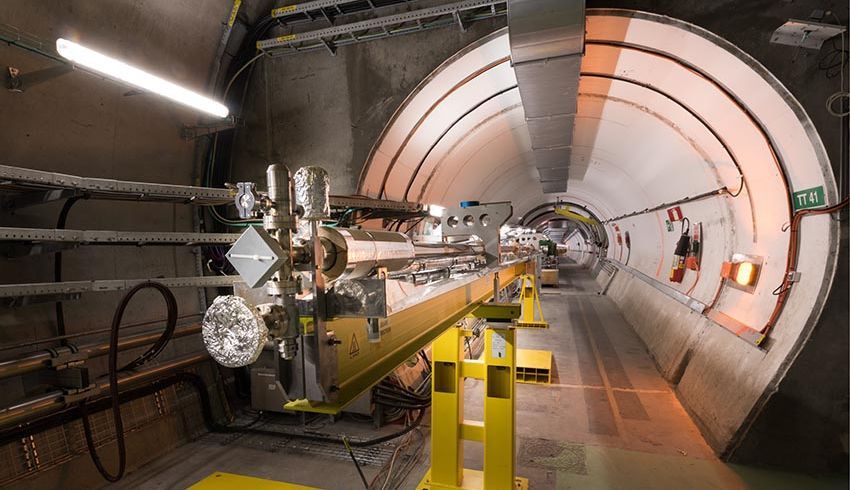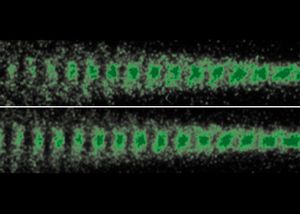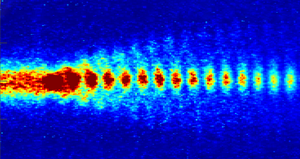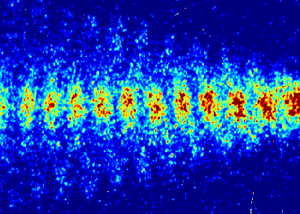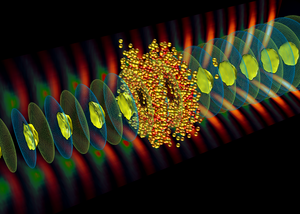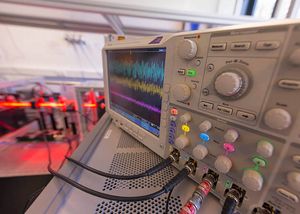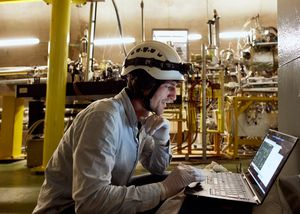The AWAKE (Advanced Proton Driven Plasma Wakefield Acceleration Experiment) group at the MPP is investigating a new method to accelerate particles to high energies. The method involves injecting a proton beam into a plasma, i.e. an ionized gas. En route, the protons entrain negatively charged plasma electrons and thus generate a kind of bow wave. If a beam of electrons is injected at a suitable point in time, they are carried along by the wave – just like a surfer riding a wave.
The research seeks to reduce the distance that is required to accelerate particles. The technique is particularly suitable for linear accelerators – and is a lower-cost alternative to the concepts proposed for the International Linear Collider (ILC) or the CERN Compact Linear Collider (CLIC).
Current research
The MPP is currently collaborating with international partners to set up the AWAKE experiment at CERN in order to achieve this objective. The Group is investigating methods that will allow the energy of the proton sources currently available – the LHC, for example – to be used for AWAKE. The aim is for the proton beam to generate charged waves in a plasma over a distance of 10 to 1,000 meters. This will allow electron beams to be accelerated up to the teraelectronvolt energy range (TeV, one million gigaelectronvolts).
A plasma accelerator would then need only 85 centimeters to accelerate electrons to an energy of 50 gigaelectronvolts. The SLAC particle accelerator, an experiment currently underway, needs 3 kilometers for this.
AWAKE at the MPP
Phone number: +49 89 32354-extension
| name | function | extension | office | |
|---|---|---|---|---|
| Bergamaschi, Michele | Postdoc | michele.bergamaschi | CERN | CERN |
| Caldwell, Allen, Prof. Dr. | Director | allen.caldwell | 529 | A.2.51 |
| Clairembaud, Arthur | PhD Student | arthur.clairembaud | 221 | A.1.19 |
| Farmer, John, Ph.D. | Postdoc | john.farmer | CERN | A.1.21 |
| Mezger, Jan | Student | jan.mezger | 561 | A.1.19 |
| Muggli, Patric, Dr. | Senior Scientist | patric.muggli | 580/CERN | A.1.17 |
| Page, Jedd | Student | jedd.page | 561 | A.1.19 |
| Ranc, Lucas, Dr. | Postdoc | lucas.ranc | CERN | A.1.21 |
| Wacker, Ina | Secretary | ina.wacker | 207 | A.2.49 |
| Zevi Della Porta, Giovanni, Dr. | Postdoc | giovanni.zevi.della.porta | CERN | A.1.21 |
Path to AWAKE: Evolution of the concept
A. Caldwell et al.
Science Direct, Volume 829, 1 September 2016, Pages 3–16
AWAKE, The Advanced Proton Driven Plasma Wakefield Acceleration Experiment at CERN
E. Gschwendtner et al.
Science Direct, Volume 829, 1 September 2016, Pages 76–82
Plasma wakefield acceleration with a modulated proton bunch
A. Caldwell et al.,
Phys. Plasmas 18, 103101 (2011)
arxiv:1105.1292
Proton-driven plasma-wakefield acceleration
Allen Caldwell, Konstantin Lotov, Alexander Pukhov & Frank Simon
Nature Physics 5, 363 - 367 (2009)
Electron trapping and acceleration by the plasma wakefield of a self-modulating proton beam
K. V. Lotov, A. P. Sosedkin, A. V. Petrenko, L. D. Amorim, J. Vieira, R. A. Fonseca, L. O. Silva, E. Gschwendtner and P. Muggli
Phys. Plasmas 21, 123116 (2014)
http://dx.doi.org/10.1063/1.4904365
